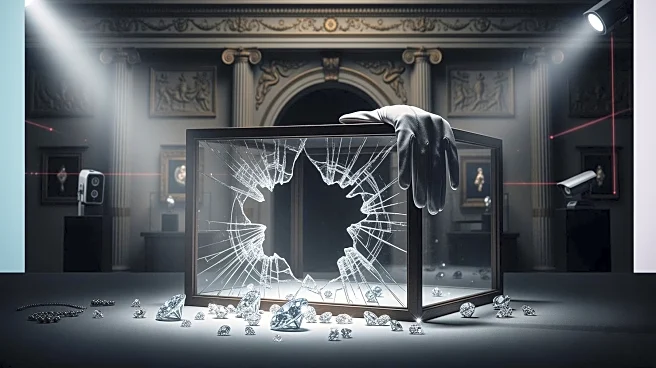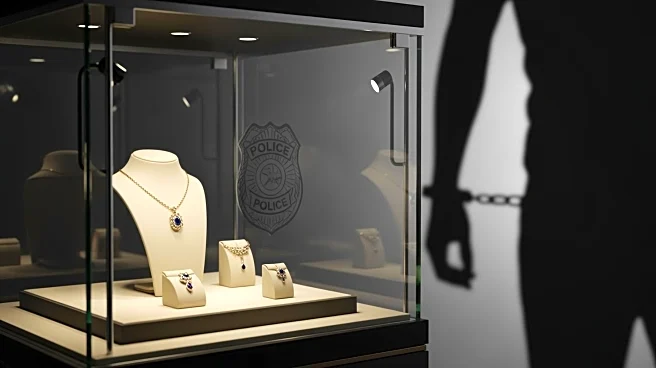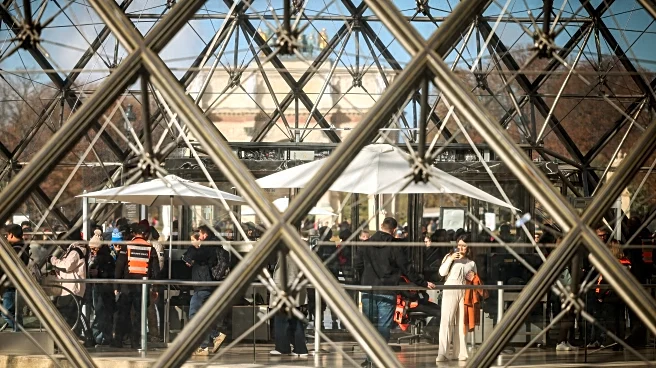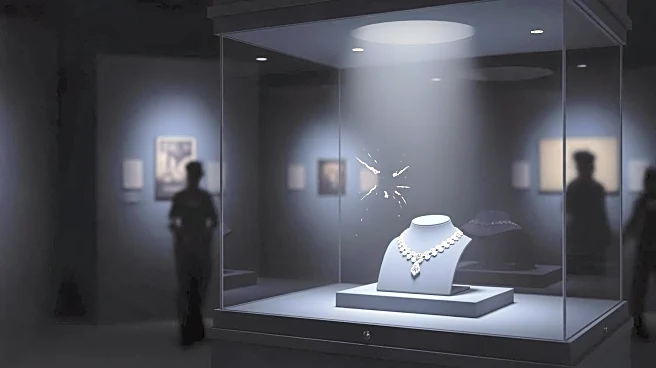What's Happening?
A 38-year-old woman has been charged in connection with a high-profile jewelry heist at the Louvre Museum in Paris. The theft, which occurred last month, involved the stealing of jewels valued at approximately
$102 million. The woman, whose identity has not been disclosed, faces charges of complicity in organized theft and criminal conspiracy. The heist was executed by four men who used a mechanical lift to access the Gallery of Apollo, where they employed a disc cutter to break open display cases. Two of the suspects have admitted their involvement, while a fourth remains at large. The stolen jewels, including a tiara worn by Empress Eugenie, have not been recovered. In addition to the woman, another individual has been charged, and three others were arrested but later released without charge.
Why It's Important?
The theft at the Louvre Museum, one of the world's most visited cultural institutions, highlights significant security vulnerabilities in high-profile locations. The incident underscores the challenges faced by museums in protecting valuable artifacts and the sophisticated methods employed by organized crime groups. The theft has implications for the art world, potentially affecting insurance premiums and security protocols at museums globally. The recovery of the stolen jewels remains a priority, as their historical and cultural value extends beyond their monetary worth. The case also raises questions about the effectiveness of current security measures and the need for enhanced surveillance and response strategies.
What's Next?
Authorities are continuing their investigation to apprehend the remaining suspect and recover the stolen jewels. The case is likely to prompt a review of security measures at the Louvre and other museums, potentially leading to increased investment in technology and personnel to prevent future incidents. The legal proceedings against the charged individuals will unfold in the coming months, with potential implications for sentencing and deterrence of similar crimes. The art community and law enforcement agencies will be closely monitoring the case for developments and lessons that can be applied to improve security in cultural institutions.












